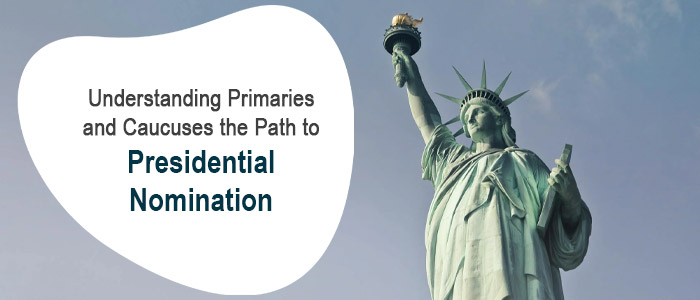Primary Elections and Caucuses: The Path to Nomination
Choosing a presidential candidate is one of the most significant things in democracy in the United States of America. The primary elections and caucuses are contest arenas from which political parties choose a nominee to compete for the presidency. Such understanding aids one in understanding how people emerge as a candidate to compete in the election.
Electoral primaries and caucuses
Primaries and caucuses are one of the procedures used when selecting the political party candidates to compete for the post in the presidential election. This process has given the party members an opportunity to make their voices known and make their choices by electing the delegates who shall at the national convention vote for a particular candidate. Therefore, this process is aimed at loyalty to the party but also the candidate scrutinizes his popularity or marketability within the voters’ base.
Types of Primaries
There are several types of primaries:
1. Open Primaries: Those are states where any voter registered with any party is allowed to vote for any of the party’s primaries irrespective of his registration. Such an open format might often encourage cases of what is known as crossover voting, where voters from one party determine the result of the other party’s contest.
2. Closed Primaries: Here, only registered party members can vote in this party’s primary election. This system is designed to discourage any form of compromise since when the insiders are voting their man, then nobody else is involved, and the party has to be serious in member selection.
3. Semi-Closed Primaries: This is an open type of popular vote in which only those who have registered for a given party together with other voters who are not affiliated to the party can vote. It tries to balance the interest of both: how empirically accessible it is for people to vote in comparison to maintaining party purity.
4. Top-Two Primaries: Every candidate is within one primary.” Any voter can vote for any candidate within a given primary election without being bound to a party preference. However, two candidates per district, the nominee of the ruling party, and the second-most popular candidate, regardless of party, advance to the general election. This format may lead to the possibility of two candidates from the same party running against each other in the general election.
The Caucus Process
Caucuses are less frequent than primaries and have more grass roots. At a caucus, party members meet and discuss their opinions on candidates at local meetings before casting their votes. Unlike primaries, caucuses are often said to be very public affairs with gatherings of people that go for hours and this process may limit participation because people have to give some of their time for it, and it is not always as accessible as the straightforward ballot casting typical of primaries.
Caucus states usually distribute delegates based on these local assemblies. The outcome may be different on delegate allocation than in the primary elections. Other caucus states include Iowa and Nevada that hold their caucuses earlier than any other state, and therefore heavily sway the momentum of the campaigns of candidates.
The Significance of Delegates
The results of the primaries and caucuses determine how delegates will support candidates at the national party conventions. Both parties, however have rules guiding the laws on delegates' awarding, though it varies widely. To be a nominee from a party, a candidate must win a majority in delegates.
The national conventions are a culmination of the process where delegates vote officially for the candidate to whom they are pledged. The conventions also offer candidates chances to unite their parties, articulate their vision, and energize their base before the general election.
Campaign Strategies Modified By Convention
Primaries and caucuses can overwhelm campaign messages by the candidates. Adjust to any particular issues or demographics of voters in a state, he or she has to do as a candidate. This calls for a focus on key states and tailoring campaign tactics to local concerns, which vary dramatically by region.
The existence of early primaries and caucuses many times results in a bandwagon effect. Candidates who fare well receive more media attention, better opportunities to fundraise, and greater public support, whereas laggard candidates may not be as likely to recover from the challenge.
Challenges and Criticisms
Despite being important, the major and caucus system is criticized. The process has been deemed too complex and cumbersome on voters. The inconsistencies of rules from one state to another have resulted in confusion and anomalies in voter participation. Additionally, the priority of early states distorts national perception and marginalizes the voices of voters in contests further down the line.
Another problem with caucuses is that they also do not inspire participation, especially on the part of people who have much less control over their own time, first-time participants, or who don't know the process.
Conclusion
Primaries and caucuses are important steps in deciding which candidates will eventually appear on the general election ballot. They are a true reflection of democratic power because parties exercise their power by delegating aspects of their nominating process to party members. Because the political environment remains in a state of flux and change, such electoral processes will continue to remain an issue of significant importance towards discussion, the need for peoples' active participation and involvement in democracy. Understanding these mechanisms can be of great value to the citizen who might seek the dynamics behind U.S. elections and through which candidates vie for the highest office in land.

